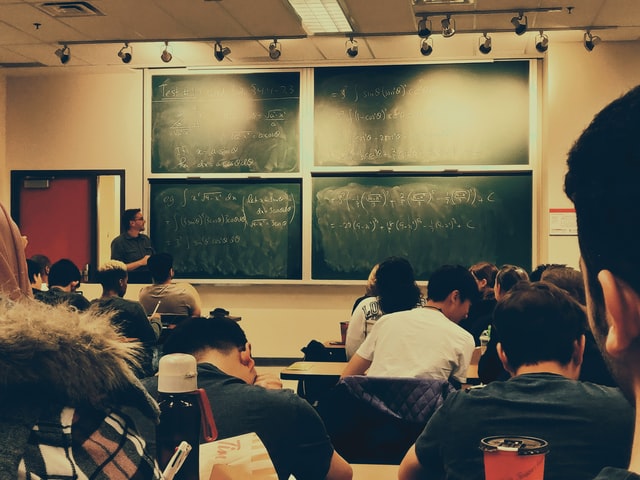
Recent protests about racism and police violence point to the fact that racism has institutional and systemic roots and expressions, reflecting non-inclusive societies.
Whether or not we admit that racism is systemic, we must ask ourselves why it is still a concern in such a multiethnic country as Canada. Isn’t it the role of schools to promote values of equity, living together, justice and democracy?
In fact, the prevalence of racism across Canada, including the inadequacy of Canadian responses to demands for Indigenous justice, may be partly attributed to failures of our educational systems that reflect larger policy approaches to managing diversity.
Approaches
Despite the existence of formal and legal discussions about diversity, our schools have not escaped implicit racist assumptions embedded in cultural debates related to identity and nationalism.
In Québec and other provinces there are efforts to develop policies and plans to integrate immigrant students and support the well-being of all students.
But schools are not necessarily fulfilling their roles helping educate a public that understands the advantages of diversity as a source of innovation, creativity and economic prosperity.
Immigrants continue to contribute to the growth of Canada’s population: Between 1991 and 2006, the proportion of foreign-born people in Canada’s population increased to 19.7 per cent from 16.1 per cent, and with this immigration is also increasing racialized and religious diversity.
However, in western countries the question of immigrants’ integration and adherence to the values of the host societies remains a dilemma.
When it comes to diversity, different countries have different approaches. Whether in majority English-speaking provinces or in Québec, no one has succeeded in fixing the problems of inequity, social injustice, racism or discrimination.
Multiculturalism
The policy of multiculturalism, first developed in 1971 in response to rising francophone nationalism in Québec, as well as increasing cultural diversity across the country, recognizes the possibility for all ethnic groups to conserve their cultural heritage. Multiculturalism was institutionalized federally from 1982 onwards through both legal and policy developments, and provinces followed suit with their own respective policies.
These policies don’t acknowledge that there is a dominant English-language culture or identity in Canada. They encourage respect for diverse cultures and dialogue among different groups.
The Canadian Multiculturalism Act acknowledges the expression and manifestation of different cultures in Canadian society and encourages the social, cultural, economic and political institutions of Canada to be both inclusive and respectful of multiculturalism, which has implications for schools, universities and public spaces.
Inter-culturalism
Québec has opted for inter-culturalism, which considers that the major culture is the culture of the French-speaking majority in Québec. The model aims to defend the province’s francophone heritage. It focuses on finding a balance that emphasizes integration and interaction and promoting a common culture that respects rights and diversity.
Thus, many laws and measures have been issued to strengthen and make official the use of the French language in the province.
Inter-culturalism is not yet defined in an official act in Québec. However, a statement of immigration and integration policy, “Let’s Build Québec Together,” issued in 1990, set out measures relating to the choice of a society whose common language in public life is French, inviting all individuals to integrate and contribute to social development.
Impact on education systems
Schools that are uncritically operating in either multicultural or inter-cultural policy frameworks tend not to develop clear and fair systems that actively affirm the rights of immigrant, racialized, Black and Indigenous students.
This means that such schools are not, in practice, valuing students’ languages, cultures or racialized identities. When it comes to language, imposing monolingualism at schools and depriving students of their mother tongue are considered phenomena of assimilation.
In the same way, ignoring minority and immigrant students’ cultural values in the curriculum and in daily practices of the classroom marginalizes them.
While some teachers, schools or boards may undertake such efforts, if government policies and plans don’t also follow suit, structural inequalities across school systems will continue.
Québec research
In research I conducted in Québec about how teachers can support immigrant students, I found that that teachers indicate that their schools celebrate cultural diversity through activities throughout the school year, and that the administration and other teachers are engaged in efforts to recognize diversity.
Yet the same interviews revealed that teachers are often left with no choice but to deal with challenges particularly facing immigrant students such as language barriers, academic challenges, cultural shock or social integration without sufficient support or training. And many teachers are struggling to meet their immigrant students’ needs.
Although some teachers try to adjust their practices, I found that schools in general risk stressing more folkloric and superficial responses to social integration, because there is no real effort being made in the schools’ curriculum or through teachers’ knowledge or understanding of the real issues facing their students.
Insufficient: Celebrating diversity
Recognizing diversity in our society will be ineffective unless this diversity is considered an asset for schools as they reconsider their values and goals. It is insufficient for schools to celebrate diversity.
Instead, schools should examine how to create a democratic environment for teaching and learning and adapt their curriculum with a critical multicultural approach that embraces anti-racist curriculum aiming to improve students’ learning experiences.
This can be accomplished by discussing forms of racism, colonialism and other issues related to students concerns, by raising awareness, empowering students to think critically and speak up for their rights. This education will surely impact white students who speak the dominant language of instruction by giving them responsibilities to break the silence and be engaged in a process of change.
It would also mean different plans and goals for supporting students so that students from Black, racialized, Indigenous and immigrant communities find equal opportunities for academic success and their rights and identities would be affirmed.
In this way, all students would be better equipped to participate in and understand today’s diverse society.
By Rola Koubeissy
Stagiaire postdoctorale – postdoctoral fellow, Department of Education and Pedagogy, Université du Québec à Montréal (UQAM)










